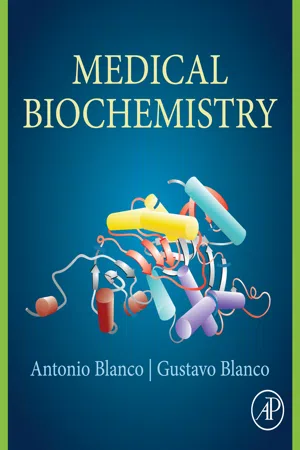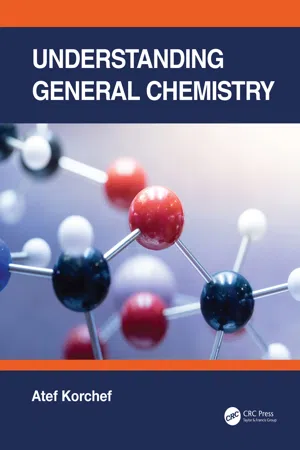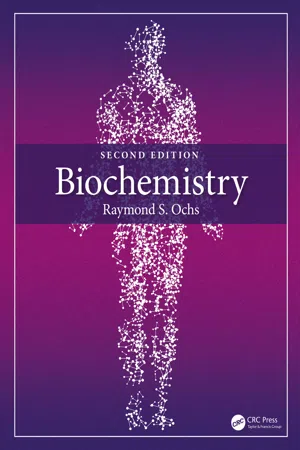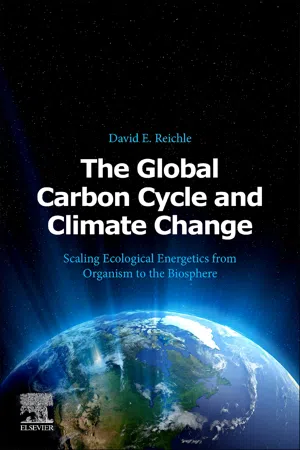Chemistry
Energy Changes
Energy changes in chemistry refer to the transformation of energy from one form to another during chemical reactions. These changes can involve the release or absorption of energy, and are often measured in terms of heat. Understanding energy changes is crucial for predicting the feasibility and direction of chemical reactions, as well as for designing processes with specific energy requirements.
Written by Perlego with AI-assistance
8 Key excerpts on "Energy Changes"
Learn about this page
Index pages curate the most relevant extracts from our library of academic textbooks. They’ve been created using an in-house natural language model (NLM), each adding context and meaning to key research topics.
- Kevin Reel, Derrick C. Wood, Scott A. Best(Authors)
- 2014(Publication Date)
- Research & Education Association(Publisher)
Chapter 10 Thermochemistry Energy Thermochemistry gives consideration to the fact that Energy Changes occur during chemical reactions. Energy (E) is defined as the ability do work (w) on a system. From a chemistry perspective, kinetic energy comes in the form of translational, vibrational, and rotational motion of molecules, whereas potential energy arises from chemical bonds and electrostatic interactions. Energy cannot be measured directly and is monitored through changes (ΔE). First Law of Thermodynamics The first law of thermodynamics is commonly called the law of conservation of energy: “energy cannot be created or destroyed.” Energy can only be converted from one form into another during chemical reactions, and therefore the energy of the universe is constant. Energy transfers occur between the system (the reaction we are studying) and the surroundings (everything else in the universe). Heat, Temperature, and Enthalpy In the realm of thermochemistry, there are three frequently used terms that are distinctly different from one another: temperature, heat, and enthalpy. Temperature (T) is a measure of the average kinetic energy of molecules, which means that at higher temperatures molecules are moving faster. On the other hand, heat (q) measures the total kinetic energy of all of the particles in a sample. We use temperature as a means to monitor heat transfers. Heat transfers are kinetic energy transfers that go from a hotter object to a cooler object until both objects are at the same temperature. According to the first law of thermodynamics, heat lost by a hotter object is gained by a colder object. In contrast, enthalpy (H) refers to the energy released or absorbed by a chemical reaction. Unless there is pressure–volume (PΔV) work performed by the system, changes in enthalpy (ΔH) are essentially the same as the heat exchanged during a reaction- eBook - ePub
- Antonio Blanco, Gustavo Blanco(Authors)
- 2017(Publication Date)
- Academic Press(Publisher)
energy . Chemical transformations are accompanied by Energy Changes. Understanding these changes is important in biochemistry since it helps to recognize how metabolic processes proceed.Thermodynamics is the branch of physics that deals with energy and its transformations. Its basic principles are applicable to biological processes. The fundamental principles of thermodynamics are expressed in the following two laws:First law of thermodynamics: The total energy of the universe remains constant (all forms of energy are exchangeable; the energy is neither created nor destroyed).Second law of thermodynamics: The entropy of the universe increases constantly (entropy is associated with disorder or randomness).Energy
Commonly, energy is defined as the capacity to produce work. Energy exists in different modes: chemical, thermal, mechanical, electrical, and radiant, all of which can be converted into each other. Energy conversions occur frequently in biological processes. The development and growth of an organism and the continuous renewal of its structures involves a large number of chemical reactions, which are only possible if there is energy input. Similarly, maintenance of body temperature in warm-blooded animals; mechanical work in muscles, cilia, and flagella; generation of electrical impulses in the nervous system; and active transport of substances across membranes are all processes that demand energy.The primary source of energy for all forms of life is solar radiation. This is captured and stored as chemical energy by photosynthetic organisms and transferred to other living beings through the feeding chain of biosphere. In aerobic organisms, energy is generated mainly by oxidation of substances incorporated with the food and transferred to compounds that retain it to be used when necessary.Chemical energy plays an important role in biological processes. The chemical energy of a compound is represented by the movement and relative position of its atoms and particles and by bonds and attractions between its elements. When a chemical reaction occurs, frequently bonds are broken or formed and the energy content of the molecules changes. The course of a chemical reaction is ultimately determined by the energy content of the system under consideration and the energy exchange between it and the environment. - eBook - ePub
- Atef Korchef(Author)
- 2022(Publication Date)
- CRC Press(Publisher)
5 Thermochemistry
DOI: 10.1201/9781003257059-55.1 Objectives
At the end of the present chapter, the student will be able to:- Define energy, work and heat.
- Distinguish between the system and the surroundings.
- Define exothermic and endothermic processes.
- Define the internal energy and the enthalpy of a system.
- Perform calculations involving change of energy.
- Define calorimetry and distinguish between specific heat and heat capacity.
- Recognize the different phase changes of a substance and calculate the heat absorbed or released during phase changes.
- Define the standard enthalpy of formation and the bond enthalpy.
- Recognize Hess’s law and calculate the enthalpy of reaction.
- Define the Born-Haber cycle and calculate the lattice enthalpy change of ionic compounds.
5.2 Energy, Heat and Work
Energy is the capacity to do work. Energy cannot be created or destroyed; it can only be transformed. The science that concerns the study of energy and its transformation is thermodynamics and the branch of thermodynamics which concerns the study of heat Energy Changes associated with chemical reactions or physical changes is called thermochemistry. In thermochemistry, we often concern ourselves with energy transfer as work (w) or as heat (q). Heat is the transfer of thermal energy (defined as the kinetic energy related to the random motion of atoms or molecules) between two matters at different temperatures. Matter can absorb or release heat during a chemical reaction or a physical process. Work is the energy used to cause an amount of matter to move. Work (w) can be calculated by the following equation:
where F is the applied force and d is the distance traveled by the matter due to this force.w = F × d5.3 System and Surroundings
The system is a portion of space which includes the particles of interest that we are studying. The surroundings are everything else. For example, if we are interested in the combustion reaction of methane (CH4 ) with oxygen (O2 ) in a cylinder, then CH4 and O2 in the cylinder form the system, and everything else is the surroundings. The entire system and surroundings constitute the universe. The system is bounded by a real or fictitious surface through which the exchanges of energy and matter are made with the surroundings (Figure 5.1 - eBook - ePub
- Raymond S. Ochs(Author)
- 2021(Publication Date)
- CRC Press(Publisher)
It is simple because it is part of everyday vocabulary: a child knows about “having a lot of energy,” the relative difficulty of walking uphill, and the existence of friction. It is also complicated. Energy exists in multiple forms: electrical, gravitational, pressure-volume work, and heat flow, each having specific conditions and equations. An important observation from the early 19th century was that all forms of energy are interconvertible. Further advances in that century led to a formal science of Energy Changes known asthermodynamics, which can elucidate the energy of a waterfall, a galloping horse, a chemical reaction, or that contained within a single molecule.There are two faces of thermodynamics: theclassicaland thestatistical. The classical approach uses a few postulates and definitions but makes no assumptions about the exact nature of the systems under investigation – even the existence of molecules is unnecessary. Thestatisticalapproach considers the collective behavior of large numbers of molecules. Both approaches lead to accurate descriptions of Energy Changes. To begin our study of thermodynamics, we need to consider three of its fundamental ideas:internal energy,enthalpy, andentropy.Internal energy is the energy of a system, the sum of theworkandheattransferred to that system. Work is an energy of motion, such as the product of force and distance. Heat is an energy transfer due to a difference in temperature between a system and its surroundings. Enthalpy (derived from the Greekenthalpos, meaning “putting heat in”) is the heat absorbed or released by a system at constant pressure. As this situation is common in laboratory experiments – and in living cells – tables of enthalpy changes for reactions are widely used in chemistry and biochemistry.Entropy is best understood using the statistical approach to thermodynamics. It is related to the number of ways that energy can be distributed as a result of a process (usually a reaction) - eBook - ePub
The Global Carbon Cycle and Climate Change
Scaling Ecological Energetics from Organism to the Biosphere
- David E. Reichle(Author)
- 2019(Publication Date)
- Elsevier(Publisher)
Chapter 2The physical and chemical bases of energy
abstract
Energy is the capacity to do work. Energy can exist in various forms, but those of greatest importance to living organisms are mechanical, chemical, radiant, and heat energy. All forms of energy are interconvertible; when conversions do occur, they do so according to rigorous laws of exchange. These are the Laws of Thermodynamics . Enthalpy is the total potential energy of a system. Entropy is a measure of the disorder, or randomness, of a system.Keywords
Carbon; Carbon forms; Chemical energy; Energy forms; Enthalpy; Entropy; Gaia hypothesis; Heat energy; Power; Solar radiant energy; Temperature; Thermodynamic laws; Work- 2.1 Energy, work, and power
- Calories and Joules
- 2.2 The different forms of energy
- Chemical energy
- Radiant energy
- Heat energy
- 2.3 The Laws of Thermodynamics
- The First Law of Thermodynamics
- Work
- Enthalpy
- The Second Law of Thermodynamics
- Entropy
- 2.4 Gaia hypothesis
- 2.5 Carbon and energy
- The forms of carbon
- Measures of carbon
- Carbon chemistry
- 2.6 Recommended reading
There is no better way to begin the study of ecological energetics than by starting with an understanding of the pertinent definitions and terminology of physics and physical chemistry. Learn this terminology early, become comfortable with the units of measure, know the basic concepts, and bioenergetics will come a lot easier.2.1. Energy, work, and power
Energy is the capacity to do work. The unit of measure for energy is the erg, which is the work performed when a force of onedyne acts through a distance of onecentimeter. The unit of force, the dyne, yields to a mass of onegram the acceleration of onecentimeter per second (cm s− 1). Since an erg of energy is such a small quantity, a larger unit, the joule, which is equal to 107ergs, becomes a more convenient unit of measure. A unit of heat used frequently in physical chemistry is the calorie (= 4.184J). The calorie is the heat energy required to raise the temperature of onegram of water from 14.5 o C to 15.5o C. The calorie is defined as being equal to 4.1840 absolute joules. The calorie is a relatively small unit of measure, and for most chemical and biological calculations the kilocalorie (103 calories) is used. The kilocalorie (kcal) is the unit which is typically used in discussing dietary intake and is often written as Calorie. A Calorie equals 103 - eBook - ePub
- Jeffrey Gaffney, Nancy Marley(Authors)
- 2017(Publication Date)
- Elsevier(Publisher)
v are positive and the reaction is endothermic.The specific heat capacity of a substance under conditions of constant volume (C v ) is related to the change in internal energy as;C v=q v/ m Δ T = ΔE v/ m Δ T(7)Since the heat released or taken up by a chemical reaction at constant volume is equal to the change in the internal energy of the system, we can simply determine the amount of heat given off or taken up to determine the change in internal energy for a chemical reaction at constant volume. This can be accomplished by measuring the change in temperature of a substance, such as water, with a known heat capacity that is in direct contact with the reaction system.The SI unit for energy is the Joule, which is defined as 1 kg • m2 • s− 2 . However, a Joule is a lot of energy compared to the energy of a single chemical bond, which is approximately 10− 18 J. An alternate unit of energy more appropriate to chemical reactions is the thermal unit of a calorie (cal), also known as the gram calorie or small calorie, which is defined as the amount of energy that it takes to heat one gram of water at one degree Celsius at one atmosphere pressure. A kilocalorie (kcal), also known as the large calorie (Cal), is the unit commonly used to measure the energy content in food. It is therefore sometimes referred to as the food calorie. The kilocalorie is defined in terms of the kilogram rather than the gram and is equal to 1000 small calories. The calorie is equal to 4.184 J and the kilocalorie is equal to 4.184 kJ. Other units commonly used in engineering are the British Thermal Unit - eBook - ePub
- Adrian Dingle, Derrick C. Wood(Authors)
- 2014(Publication Date)
- Research & Education Association(Publisher)
6. Making bonds is an exothermic process that releases energy (exothermic changes are given negative values).7. Breaking or making a particular bond involves the same magnitude of energy change, i.e., the energy change is the same for breaking and making a particular bond, all that differs is the sign. For example, an average bond energy of 347 kJ for the C–C bond, means that 347 kJ of energy will be released (–347) when the bond is broken in a reaction, and that 347 kJ of energy is required to break the bond (+347) in a reaction.
A. Breaking and Making Bonds 1. All chemical reactions involve the making and breaking of bonds. 2. The energy required to break all of the reactant bonds is a sum of all of the average bond energies in the reactants. This is an endothermic term. 3. The energy released in making all of the product bonds is a sum of all of the average bond energies in the products. This is an exothermic term.II. Bond Energies in Chemical Reactions4. The energy change in the reaction as a whole is the sum of the breaking (endothermic) process and the making (exothermic) process, and can be negative or positive depending on the relative magnitude of the two (breaking and making) processes.5. In an exothermic reaction, thermal energy is transferred to the surroundings. In an endothermic reaction, thermal energy is transferred from the surroundings. In each case the energy transfer is called the enthalpy change or ΔH, and it is usually measured in kJ/mol.System refers to a particular part of the universe that is being studied, and, in chemistry, this usually simply means a certain, chemical reaction.Surroundings is everything that is outside of the system.Universe is the system AND the surroundings.Endothermic is energy transferred from the surroundings to the system.Exothermic is energy transferred from the system to the surroundings.Standard Enthalpies of Formation is the energy change when 1 mole of a substance is formed from its elements in their standard states. Also called ΔH°f - eBook - ePub
Foundations for Teaching Chemistry
Chemical Knowledge for Teaching
- Keith S. Taber(Author)
- 2019(Publication Date)
- Routledge(Publisher)
Here there is a spontaneous process which apparently absorbs energy (that is, the cooled mixture slowly returns to room temperature as it is heated by its surroundings), suggesting that, overall, the bonding in the solution is not as strong as that present before. The energy released as solvation occurs does not compensate for the energy needed to break bonds (e.g., between ions in the salt). Yet the process is still energetically favourable (the total free energy decreases) as the total number of ways that the energy quanta in the system can be distributed across the species in the mixture is far greater than the number of options in the separate solid and liquid before dissolving.That is, the increase in entropy (ΔS) (T) is sufficient to give an overall negative free energy change (ΔG) at that temperature despite an increase in enthalpy (heat entering the system, ΔH) as ΔG = ΔH – TΔS. Students at the highest levels of school chemistry sometimes have to study some basic thermodynamics and so appreciate the nature and significance of entropy to the overall free Energy Changes in various processes. It is probably sensible to ignore entropy in introductory teaching, and this will be less problematic when students appreciate that chemistry is understood in terms of models, which involve simplifications and so will sometimes fail to explain all examples or details of a phenomena (see Chapter 3 ).Chemical reactionsChemistry is the science that studies the properties of different substances and, in particular, their chemical properties: which substances react with which other substances, under what conditions, and what new substances are produced. Like many central ideas in chemistry, chemical reactions are understood at two levels of description (see Chapter 4 ). The actual phenomena concern changes seen in the laboratory: when a flame is applied to a balloon filled with hydrogen there is an explosion; when some magnesium ribbon is added to some hydrochloric acid solution, there is fizzing, and metal seems to incrementally disappear; when lead (II) nitrate solution is added to potassium iodide solution, a strong yellow colouration appears, the mixture becomes opaque, and over time a yellow powder settles beneath a clear liquid (see Figure 11.1







